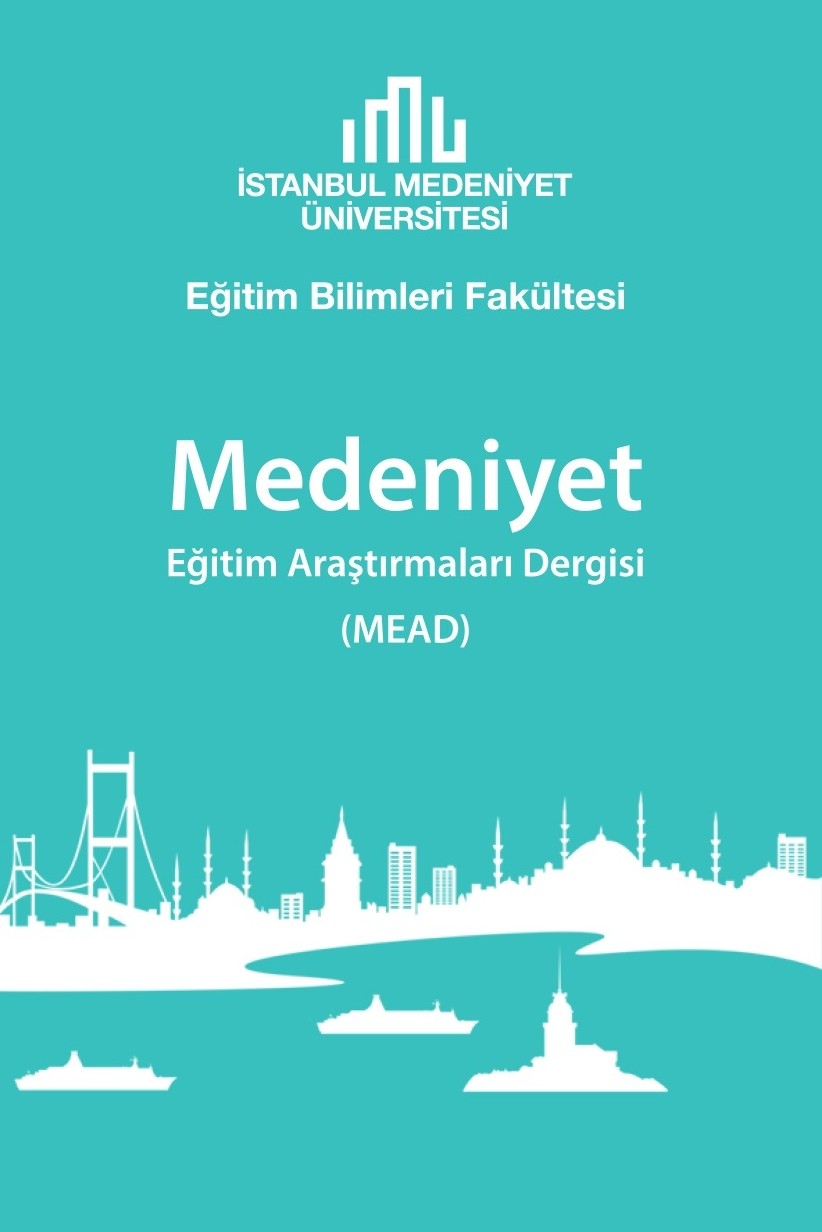DİJİTAL ÖĞRENME-ÖĞRETME ARAÇLARI
Teknolojik araçların; 21.yüzyıl yetkinliklerini geliştirmesi, bilginin ilgi çekici olması, problem çözmeye yardımcı olmakla kalmayıp problemlerin farkına varmak için ortamlar sunması, içerikler ve alıştırmalar animasyonlarla, ses ve videolarla entegre edildiği için öğrencilere sistematik olarak dersler sunması gibi avantajları vardır. Bu yüzden teknolojik araçların önemi birçok açıdan büyüktür. Bunun yansımalarından biri de eğitimdir. Bu araştırma eğitim alanındaki dijital öğrenme ve öğretme araçlarını ulusal çapta tanıtmak ve onların kullanmasını desteklemenin yanında bu araçların kullanılmasını yaygınlaştırmak için yapılmıştır. Bu araştırma, alanyazın yöntemi ile makale, web sitesi vb. farklı ortamlardan sentezlenerek yapılmıştır. Bu sentez sonucunda toplamda 15 tane dijital öğrenme ve öğretme incelenmiştir. Bunların bazıları “coğrafya”, “matematik”, “yabancı dil” ve “sözel derslerde”; bazıları ise bütün derslerin farklı evrelerinde kullanılabilmektedir. Bu araçların bazıları “Google Earth”, “Padlet”, “Socrative”, “Puzzlemaker” ve “Read With Me”dir. Bu araçların amaçları, sınıflarda kullanımı, yararları üzerine incelemelerde bulunulmuştur. Ayrıca, her dijital öğrenme ve öğretme araçlarının web site ekran görüntüleri de paylaşılmıştır. Bu araçlar sayesinde öğrenme süreci daha etkileşimli hale gelecektir.
Anahtar Kelimeler:
Öğrenme ve Öğretme, Dijital, Araçlar
___
- Al Rawashdeh, Z. A., Mohammed Y. E., Al Arab R. A., Alara M., Al-Rawashdeh B. (2021). Advantages and disadvantages of using e-learning in university education: Analyzing students’ perspectives. The Electronic Journal of e-Learning, 19(2), pp. 107-117.
- Alfatikh, E., Winanti, E. , Prasetya, S. ve Budiyanto, E. (2020). Implementing Google Earth to enhance student’s engagement and learning outcome in geography learning. Geosfera Indonesia. 5. 147. 10.19184/geosi.v5i1.11987.
- Aslan S.,; Taylan Ö. (2021). Covid-19 Pandemisi Ve Dijital Teknolojilerin Dönüşümü. M. Kurt, Ö. Taylan, A. Koçal ve Oktay Tatlıcıoğlu(Eds.). Covid-19 Pandemisinin Sosyal Bilimlerdeki Yansımaları (Pp.160) Astana Yayınları.
- Awada G. ve Diab B. H. (2018). The effect of Google Earth and wiki models on oral presentation skills of university efl learners. International Journal of Teaching and Learning in Higher Education, v30( n1), p36-46. Awedh, M., Mueen, A., Zafar, B. ve , Manzoor, U. (2014). Using Socrative and smartphones for the support of collaborative learning. International Journal on Integrating Technology in Education, 3(4), 17–24. Retrieved from https://doi.org/10.5121/ijite.2014.3402
- Bates, A.W. (2015). Teaching in a Digital Age: Guidelines for design teaching and learning, Ontario: BCcampus.
- Blundell, C., Lee, K-T., Nykvist, S. (2016). Digital learning in schools: Conceptualizing the challenges and influences on teacher practice. Journal of Information Technology Education: Research, 15, 535-560. Retrieved from http://www.informingscience.org/Publications/3578
- Bransford, J. D., Brown, A. L., Cocking, R. R. (2000). How people learn: Brain, mind, experience, and school. Washington, DC: National Academies Press.
- Brigham J. T. (2018). Piktochart. Journal of the Medical Library Association 106 (4).
- DoBell, R. (2013). The relationship between Montana science teachers’ self-efficacy and the ıintegration of web 2.0 elements in the classroom in schools with a student population over 900 (doctoral dissertation).
- Eliason S. (2011). Increase Student Participation with Poll Everywhere. In EdTech Day Conference. Presentation 4.
- Fisher, C. D. (2017). Padlet: An online tool for learner engagement and collaboration. Academy of Management Learning and Education, 16(1), 163-165. Retrieved from https://doi.org/10.5465/amle.2017.0055
- Gawin F. D. (2021). Padlet for Project-based Learning in an Entrepreneurship Course. Journal of Cognitive Sciences and Human Development. Vol.7(2).
- Gherhes, V.; Stoian, C.E., F˘arcas, iu, M.A., Stanici, M. (2021). E-Learning students’ preferences and behaviors. sustainability. 13, 4381. Retrieved from https://doi.org/10.3390/su13084381
- Google Earth (2022.04.19). https://earth.google.com/web/
- Google Scholar (2022.04.19). https://scholar.google.com/intl/en/scholar/about.html
- Graduate Student Theses, Dissertations, & Professional Papers, The University of Montana. Retrieved from Hew, K. F.; Brush, T. (2007). Integrating technology into K-12 teaching and learning: Current knowledge gaps and recommendations for future research. Educational Technology Research and Development, 55(3), 223-252. doi:10.1007/s11423-006-9022-5
- Howard, S. K.; Mozejko, A. (2015). Considering the history of digital technologies in education. In M. Henderson & G. Romero (Eds.), Teaching and digital technologies: Big issues and critical questions.(pp. 157-168). Port Melbourne, Australia: Cambridge University Press. http://scholarworks.umt.edu/etd/10747
- Leary R. M.; Baumeister F. R. (1997).Writing Narrative Literature Reviews. Review of General Psychology. Vol. 1(, No. 3), 311-320
- Lennox F. (2021). Use Of Socrative As A Teaching Tool In Anatomy During The Covıd-19 Pandemic Manga High (2022.04.27). https://www.mangahigh.com/en/
- Morrison R. J., Risman L. K., Reilly J., Eisinger M. J. (2020). MS An Evaluation of Prodigy: A Case-Study Approach to Implementation and Student Achievement Outcomes
- Padlet. (2022.03.28). https://padlet.com/gallery/to_do
- Padmini Devi, K. R., & Saravanakumar, A. R. (2018). An outlook on digital tools in education. In A. C. Jayanthy & G. Kalaiyarasan (Eds.), Conference Monograph of International Conference on Curriculum and Instructional design for Global Education (Glide – 2018) (pp. 210-214). Karaikudi. Retrieved from https://www.researchgate.net/publication/334362394_AN_OUTLOOK_ON_ DIGITAL_TOOLS_IN_EDUCATION paper: A step-by-step approach. International Journal of Basic and Applied Science, Vol. 03(, No. 01), July 2014, pp. 47-56.
- Pekdemir E. (2018). Google Scholar Through the Eyes of Academics. International Technology and Education Journal, Vol. 2( No. 2), 1-10.
- Piktochart (2022.03.30). https://create.piktochart.com/teams/27049477/dashboard
- Poll Everywhere(2022.03.30). https://www.polleverywhere.com/activities
- Puzzlemaker (2022.04.09). https://puzzlemaker.discoveryeducation.com/
- Ramdhani A., Ramdhani A. M. Amin S. A. (2014). Writing a literature review research
- Randolph, J.J. (2009). A Guide to Writing the Dis¬sertation Literature Review, Practical Assessment, Research & Evaluation, 14 (1314),: 1-13
- Read With Me (2022.04.19). https://readwithmesalon.com/info/about
- Renderforest (2022.04.28). https://www.renderforest.com/
- Seesaw (2022.04.09). https://web.seesaw.me/
- Sheppard Software (2022.04.09). https://www.sheppardsoftware.com/
- Socrative (2022.04.10). https://www.socrative.com/
- Spelling City (2022.04.10). https://www.spellingcity.com/
- Sumdog (2022.04.10). https://www.sumdog.com/en/
- Synth (2022.04.09 ). https://gosynth.com/channels
- ISSN: 2717-8390
- Başlangıç: 2017
- Yayıncı: İstanbul Medeniyet Üniversitesi
